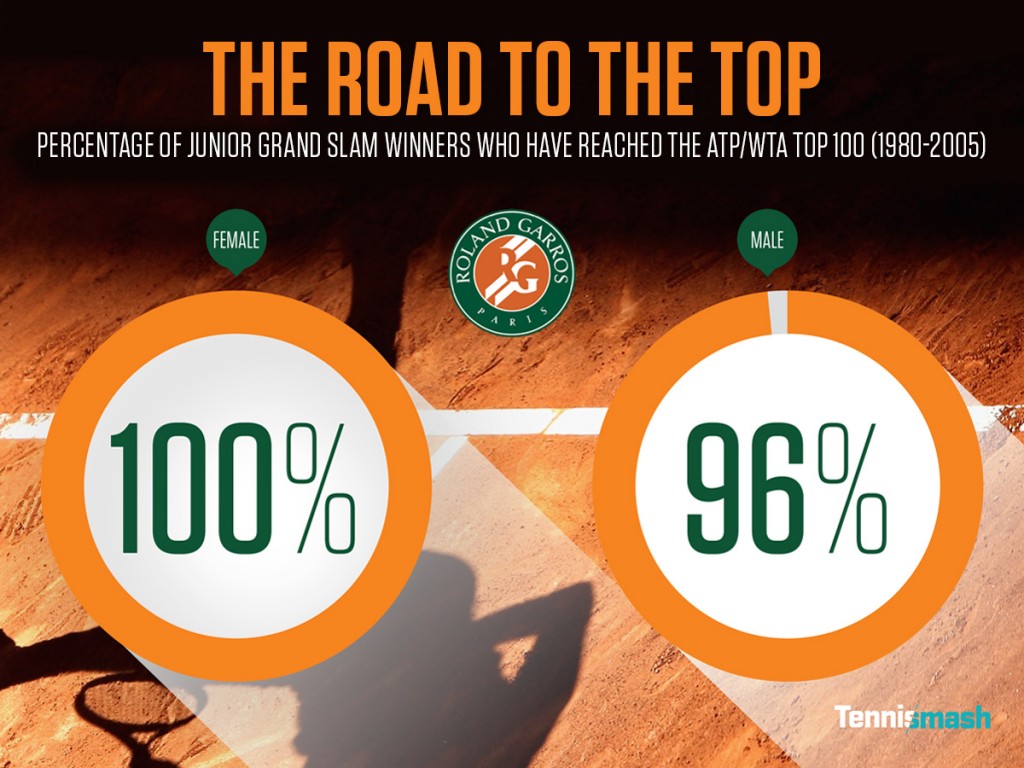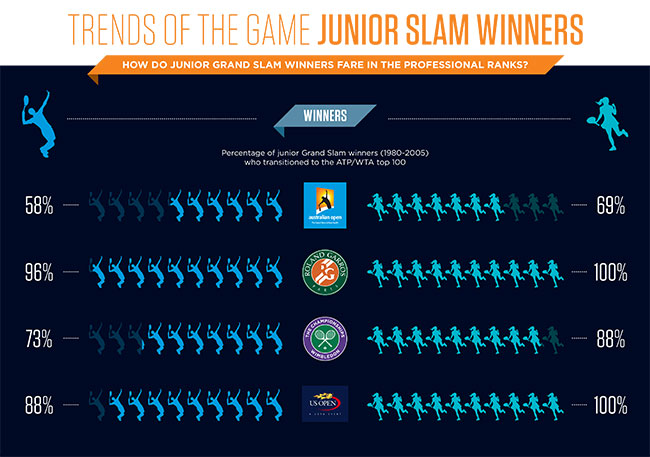With the junior championships underway at Roland Garros, let’s pause to reflect on how significant a win in Paris is for predicting longer-term success.

One of the questions that those involved in player development often debate is how important the junior game is to future professional success. There’s one camp that suggests junior results have little bearing on what might happen in the future, while there is another that suggests players have to come from somewhere, and the junior game is the obvious breeding ground.
So, what’s the answer? Do the world’s best juniors actually become accomplished professionals?
To get at the question we first needed to clarify a few particulars – some terms of reference, if you like:

This is what we found: when you compare the four slams across those 26 years, you can see that the French Open is the strongest predictor of top 100 success, while the Australian Open sits comfortably in 4th place. Incredibly, there was only one junior French winner over that time frame – in both the boy’s and girl’s games – who didn’t crack a double digit ranking. His name – Carlos Cuadrado – was widely regarded as one of the best young talents of his generation but whose transition to the pro game was disrupted by injury.
So why are the juniors that win the French better placed than counterparts that triumph elsewhere?
I suspect that all this is on the verge of changing (if it hasn’t already), but that’s for a deeper dive and for another time. For the moment, the moral of this story (for budding pros) is that if you could choose one Junior Slam to win, it’d be the French. And if you had to choose one court surface to learn the game on as a kid, it’d (still) be clay.
12 February 2018
Kristina Mladenovic has won 12 of her past 13 matches in singles and doubles.The Frenchwom... More
14 August 2017
Maria Sharapova has opened up in her memoir Unstoppable, revealing her take on how Serena ... More
1 March 2016
At one end of the facial serenity spectrum you have Roger Federer, a picture of unhurried ... More
30 December 2019
Nick Kyrgios’ first-round win over Andrey Rublev at last year’s Kremlin Cup in Moscow ... More